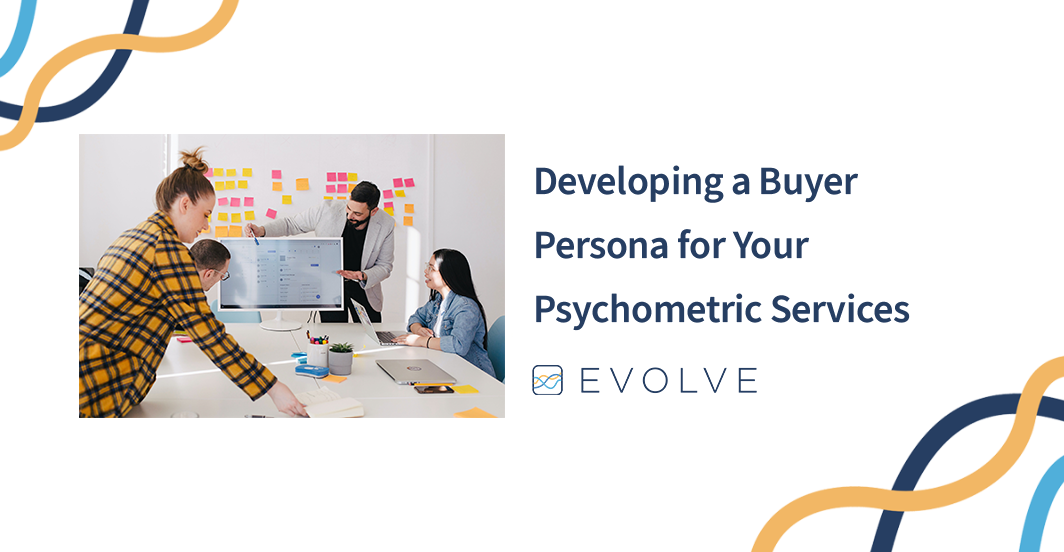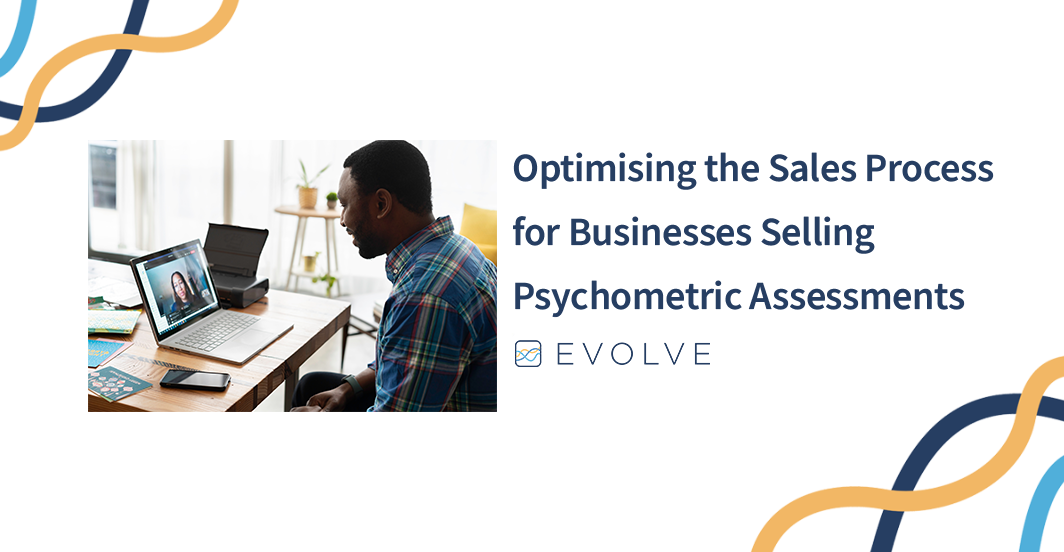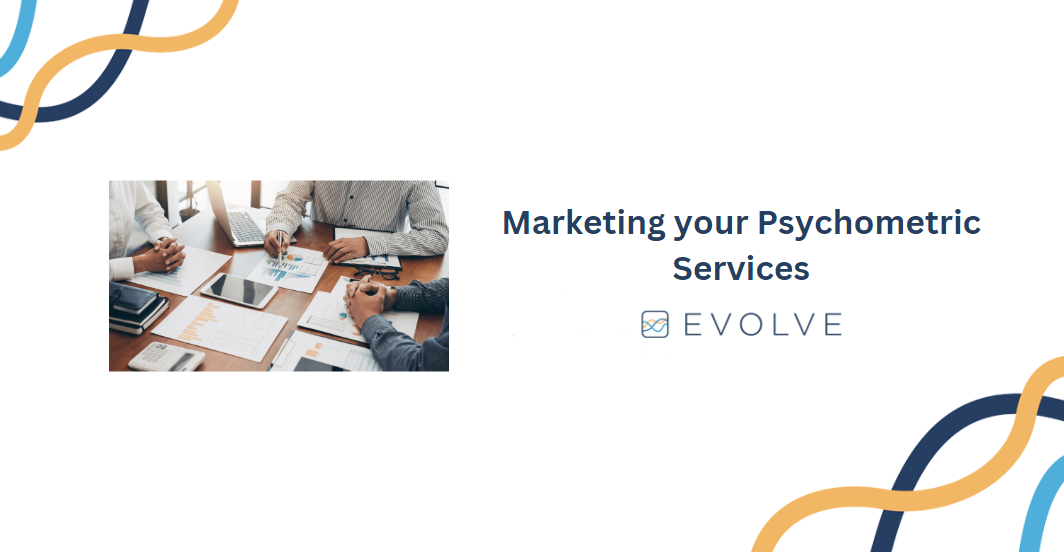How To Scale Your Psychometric Service: Buyer Personas & ICPs
Building a company, department, division or even a personal brand is tough. Not only do you have to put in a tremendous amount of work to get it off the ground, you also need to look after your customers, go to market effectively, make all the right promises, differentiate yourself, and, of course, make a profit!
In this 7-part blog series, we’ll break down some of the elements that go into scaling a psychometric service.
Who Are My Customers?
It’s time to talk about target customers. In part 2 of our blog series, we'll discuss the people you’re aiming to provide value to.
Before we begin, let's look at some useful definitions:
- Ideal Customer: This is your target company
- Buyer Persona: This is the person whose problems you'll be solving
The two are used interchangeably by some, but it is useful to understand their differences especially when first defining what they are for your company.
And on that note, let's begin.
1. The Ideal Customer
Describing the ideal companies that we want to sell to helps determine our choice of language, our brand's tone of voice, and the topics and references in the stories we tell.
When defining ideal customer companies, make sure to consider things like industry, size, structure, products and stakeholders. Try to be as specific as possible with your ideal customer – it’ll help you have far more meaningful conversations.
If, for example, your ideal customers are small businesses in the west of England, your blog and its focus will be far different from the way it would be written if your ideal customer was a global FTSE 100 company - also your LinkedIn profile, case studies and testimonials!
If your product is a psychometric tool that solves problems for internal recruiters wading through high-volumes of applicants, you’ll probably not be channeling your marketing towards SMEs. Be clear, be specific.
2. The Buyer Persona
The persona is a semi-fictional character that embodies the behaviours and characteristics displayed by many of our company’s target audience (the people who will buy our product/service). Typically, we would expect to work with 2-3 personas.
Defining a buyer persona enables us to specifically target our approach towards; it gives us somebody whose problems we can truly solve: somebody to give our advice to, somebody we can help, and somebody we can focus our marketing towards. The buyer persona often has frustrations, issues and challenges that lead them to you and your services.
Take the time to fully consider what position our buyer persona has within their company, if they possess any decision-making authority , what their interests are, what challenges they face and what motivates them. Try to fully understand the real challenges and problems your buyer persona has before you think about solving them.
- Focus on behaviours, challenges, and problems, not job titles.
- Stick to 2 or 3 - this will help you stay incredibly focussed.
- Share them with your colleagues. It’s crucial everybody in your company knows your buyer personas.
3. Running your own Buyer Persona workshop
For some people reading this blog post who are involved in start-up or small businesses, running a buyer persona workshop might be a small affair, either on your own, or with another colleague or co-founder. For others, it may be a larger workshop with more team members. Regardless of the size of your organisation, it’s an incredibly worthwhile exercise to undertake.
Have a look through the structure of the workshop below to see how
you can run your own buyer persona session:
Attendees:
Ideal buyer persona workshop attendees would be taken from the following list (aim for as many people as you can)
A. Senior Customer Facing People (directors, account managers, sales, customer success team)
B. Marketing/Product Owners
C. Support/Service/Presales
D. Customer Onboarding
E. Senior people with deep understanding of the market
A buyer persona is a description of the person that you believe your customer is andwhat they’re like. The purpose of the persona workshop is to understand the interests,frustrations, concerns and challenges of these people - it is not to focus on your company message to them.
Workshop agenda:
- The Ideal Customer
Think again about the current and
previous problems you have solved for some of your customers and what kinds of organisations they were
a. Prompts for the audience - include size by geography, size by employees,
turnover, industry, maturity, type, market conditions
b. Who do we really want to work with? - The Buying Centre
a. Who is making the decisions in the company and who are the people who
can influence decisions and why?
b. What decision-making criteria might they use? For example, this might be a business case needs to be created and signed off by the senior management team for new purchases over £10,000 - The Buyer and Competitive Landscape
a. What is going on in the marketplace? What changes are happening/coming down the line and how will this interest/affect our ideal customers? - Value Proposition and Positioning Statement
Undertake the exercise outlined in part 1 of this blog series - Triggers
a. Think about any compelling events that have happened in the past or
reasons that have made a customer take action and require the products
and services you provide. (Phone a peer or friend, search Google, read up on
a subject, start an investigation)
b. List as many as possible – these will become topics you can talk about in
your marketing and your content – customers will find it relatable! - Describe Your Personas
a. Persona 1
i. Who are they – in their business, but also what are they interested
in? What do they read? Where to they consume information? What do
they subscribe to? What do they really care about/
ii. What are their challenges and the implications of these challenges?
iii. What frustrations do they have? How big are they? What would they
do to alleviate them?
v. List all of the ways that we can currently help, and how we could
potentially help in the future.
b. Persona 2 (go through the same exercise as above)
c. Persona 3 (time permitting/if required)
The workshop should take around a half working day, to ensure that everything is covered.
The output of the buyer persona workshop:
Use a flip chart for your workshop to make it easy to capture notes and look back over them. For the sake of efficiency, ensure to only write up notes of those things you agree on, rather than everything that is discussed. You’re trying to capture consensus, not a transcript of the day!
Just to be sure you don’t miss anything,you could record the workshop on a smartphone Memo App.
Write up your report.
The purpose of the report is to summarise the workshop findings. We have listed a structure to which you can follow when writing up your report
A. Write out your ideal customer
B. Explain the buying centre you work with
C. List your triggers
D. Describe each persona’s traits on one page. Add a photo and pin it up on the wall of your office
E. List all the ideas you’ve had for content pieces and add them to your content calendar
4. Bring Your Personas To Life
Ask your customers for feedback.
Find a prospect and a customer you think matches your persona and ask them to look at your website.
Ask your contacts to provide you with honest answers and feedback to the following
questions:
• Are you clear on what we do?
• Does it sound like us when we write on our website?
• What is the most useful part of our website for you?
• What’s the one clear message you take away from our website?
• What is missing, and if you could wave a magic wand, what would you have us add?



